Vegetarian Recipes for Baby Led Weaning & Toddlers
Table of Contents
What do we know about vegetarian diets?
There are many reasons why people follow a vegetarian diet: they may have cultural or spiritual values, a concern for animal welfare and animal farming or they may simply just not like meat! Just as vegetarian diets can be nutritious and safe for adults, they can be also be nutritious and safe for babies and toddlers, too. Our babies’ first foods, after all, tend to be cereals, mashed vegetables and puréed fruits. However, if you wish to continue with a vegetarian diet for your child, their meals will need some careful planning to ensure that they receive the proper number of calories and nutrients for their growth and development.
There are many kinds of vegetarian diets: pescatarians, who avoid animal proteins but will eat fish; lacto-ovo vegetarians who will include dairy products (milk, eggs, cheese, yogurt etc)’ ovo vegetarians will eat eggs but no other dairy products. Dairy and eggs provide many of the same nutrients as fish and meat, so lacto-ovo vegetarians are less likely to develop vitamin and mineral deficiencies than those who avoid eggs and dairy products.
Some vitamins and minerals, such as B12 and iron, are either not found in plant-based foods or are harder for our bodies to absorb in plant form.
Studies have however found that children raised on a vegetarian diet have less risk for certain diseases and are less likely to suffer from childhood obesity because plant-based foods tend to have less saturated fat and cholesterol. Always read the labels on the foods that you buy so that you can avoid unhealthy products, for example, choose foods that are low in salt, sugar and fat. Try to ensure that your growing toddler has a well-rounded diet and consumes enough calories.
The Journey of Following a Vegetarian Diet for Baby Led Weaning and Toddlers
As parents, we consistently strive to provide our children with the best of everything, especially when it comes to their nutrition. The journey of introducing solid foods to our little ones is an important milestone, and for those who choose to follow a vegetarian diet, baby led weaning becomes an exciting opportunity to instil healthy eating habits right from the start.
Baby led weaning is a method that allows babies to self-feed and regulate their food consumption. Instead of traditional purees, they are introduced to a variety of soft, age-appropriate finger foods. Adopting a vegetarian approach to baby led weaning not only benefits the baby's growth and development but also helps them develop a love for plant-based foods early on.
One of the main concerns when it comes to vegetarianism for babies is the adequate intake of essential nutrients, such as protein, iron, calcium, and vitamin B12. However, with careful meal planning and a diverse range of vegetarian options, it is entirely feasible to meet these nutritional requirements.
Protein, a vital building block for growth and development, can be obtained through plant-based sources such as tofu, lentils, beans, and nut butters. These can be mashed, roasted, or presented in finger-friendly sizes to make them easily consumable for little ones. Introducing a variety of legumes and grains will ensure a well-rounded source of protein.
Iron, essential for oxygen transportation and brain development, can be found in leafy green vegetables like spinach, fortified cereals, and dried fruits. Combining these iron-rich foods with vitamin C helps in its absorption. For example, serving sliced oranges along with spinach or offering a glass of freshly squeezed orange juice.
Calcium, crucial for bone development, can be obtained from sources such as fortified plant-based milk, yogurt, cheese, and leafy greens like kale or broccoli. Including these foods in various forms, whether pureed, cooked, or as part of finger foods, ensures a sufficient intake of calcium.
Vitamin B12, crucial for nerve function and blood cell production, is primarily present in animal-based products. However, fortified plant-based milks, cereals, and nutritional yeast can help bridge this gap. It is advisable to consult a healthcare professional to ensure adequate vitamin B12 supplementation for babies following a vegetarian diet.
The key to successful baby led weaning is offering a wide variety of fruits, vegetables, whole grains, plant-based proteins, and healthy fats. Experimenting with different textures, flavors, and colors piques their curiosity and helps them develop a diverse palate.
Incorporating the rainbow of fruits and vegetables ensures a rich supply of vitamins, minerals, and antioxidants. Include various seasonal produce such as avocados, sweet potatoes, blueberries, and mangoes. Serve them in mashed or soft cooked forms to make them easily manageable for little hands and mouths.
Creating meals that are visually appealing and enjoyable enhances the dining experience for toddlers. Cut fruits and vegetables into fun shapes, use cookie cutters to make sandwiches more exciting, and engage children in the meal preparation process. This involvement fosters their interest in food and encourages them to explore different flavors.
Introducing a vegetarian diet during baby led weaning and continuing it as toddlers allows our little ones to become accustomed to a diverse range of plant-based foods. From fruits and vegetables to grains, legumes, and plant-based protein sources, their palates expand, and they develop a healthier relationship with food.
As parents, it is vital to stay informed about the nutritional needs of our children and consult healthcare professionals when required. With careful planning and creative meal ideas, following a vegetarian diet during baby led weaning and beyond can offer young ones a lifetime of health benefits and establish a strong foundation for compassionate and sustainable eating habits.
The Nutritional Value of Vegetarian Food at Breakfast
The Nutritional Value of Vegetarian Food at Breakfast for Baby-Led Weaning and Toddlers
Breakfast is often referred to as the most important meal of the day, and this claim holds true for babies and toddlers too. When it comes to baby-led weaning and feeding toddlers, vegetarian options for breakfast can provide optimal nutrition while introducing them to a diverse range of flavours and textures.
One of the primary concerns in a vegetarian breakfast for baby-led weaning is ensuring an adequate intake of protein. Good sources of plant-based protein include tofu, lentils, chickpeas, and quinoa. Tofu, soft and diced, can be offered to babies while lentils can be cooked and mashed or pureed. Chickpea flour can be used to make protein-rich pancakes or muffins, perfect for little hands to self-feed. Quinoa, a complete protein, can be cooked and mixed with fruits or vegetables, creating a nutrient-packed porridge.
Vegetables and fruits are also vital components of a wholesome vegetarian breakfast. These provide essential vitamins, minerals, and antioxidants while introducing babies and toddlers to various tastes. Fresh fruits such as bananas, berries, or slices of avocado are easily enjoyed by little ones and provide important nutrients like vitamins C and potassium. Additionally, vegetables like sweet potatoes, carrots, or spinach can be steamed and served as chunks or purees, offering valuable fibre, Vitamin A, and iron.
Whole grains feature prominently in a vegetarian breakfast, offering energy and essential nutrients. Items like whole wheat bread, oats, or millet can be offered in the form of toast, porridge, or puffed cereals, all are a healthy meal. These grains provide carbohydrates for sustained energy throughout the day, and oats, in particular, are known to be high in fibre, which aids digestion, while supporting healthy growth and development, great for the entire family too.
Another crucial nutrient for babies and toddlers is calcium, essential for the development of strong bones and teeth. Vegetarian sources rich in calcium include fortified plant-based milks, such as soy, almond, or oat milk. These can be used to make cereals, porridge, or smoothies. Moreover, chia seeds, when soaked in plant-based milk, form a gel-like consistency, creating a fun and nutritious option for little ones.
In conclusion, a vegetarian breakfast for baby-led weaning and toddlers can provide a wide range of nutritional benefits. By incorporating plant-based protein, vegetables, fruits, whole grains, and calcium-rich foods, you can ensure your little ones receive a balanced and nourishing start to their day. It is important to consult a health professional to ensure that all nutritional requirements are being met based on the individual needs of the child.
You have to try my fluffy cottage cheese pumpkin pancakes - a great recipe for this Autumnal season. Make a bigger batch for the whole family to enjoy!
This baked apple recipe is a fun way to serve apple to baby. Using lots of different ingredients to make the apple slices look fun and inviting to baby.
This is a great 3 ingredient millet porridge recipe - ready in 10 minutes. Start the day with a nutritious breakfast that can feed baby from 6 months old.
This is a really easy recipe to whip up in a hurry, perfectly filling! These cottage cheese pancakes do not contain flour which is great for gluten free babies.
This is a yummy and quick smoothie recipe with yogurt, peanut butter and banana and can be served in a cup for older kids or a bowl with a spoon for babies.
This oatmeal mug cake is soft and spongy and great for baby led weaning and little hands. The recipe uses the microwave and can be a fun breakfast or snack.
These banana pancakes are a great addition to the breakfast routine. Using only two ingredients they are a delicious recipe the whole family can enjoy.
A baked oats recipe with no banana or chocolate is a great breakfast option for baby and toddler! You can also make it in advance for those busy mornings!
These are a delicious banana muffins recipe with an added nutritious “secret ingredient”. They are great as a meal on the go for little hands to hold.
This pureed rhubarb fool recipe is an easy make ahead breakfast on the go or yummy dessert for baby, toddler and the adults too! Good intro to a seasonal fruit.
Applesauce fritters are an excellent finger food option for baby-led weaning as they are soft, easily manageable, and packed with flavour. Try for breakfast!
These blackberry oat bars are a great, quick breakfast for baby-led weaning, picky eaters and older kids. Packed with simple ingredients and natural sweetness.
These fluffy pancakes are so quick and easy to make for those busy mornings. They are a great baby-led weaning breakfast or snack.
These Weetabix bites are a great baby-led weaning finger food recipe. With just 2 ingredients they are quick and easy to whip up for a snack or breakfast idea.
These pretty pink beetroot pancakes are great for baby-led weaning and also for those picky eaters. Beetroot provides some natural sweetness and lots of fibre.
The sweet potato pancakes are a great finger food option for baby and toddler. Why not portion and freeze the raw batter and cook when needed to save time?
An easy dairy free almond flour banana pancake recipe from 6 months old. A great easy breakfast that you could serve with plain yogurt and fresh berries.
A great recipe if you need a make ahead store cupboard porridge mix! Try with an almond milk for a nutritious plant based alternative porridge recipe.
A great way to add more fruit to your baby or toddler's diet. A fruit smoothie bowl can be made with frozen fruit to give a creamier and thick texture.
This Weetabix and banana pudding combines two popular ingredients for a baby led weaning option. An easy make ahead breakfast recipe for those busy mornings!
An apple porridge recipe that offers a delightful twist with the combination of apple and blackberry, reminiscent of a comforting apple and blackberry crumble.
With only four ingredients and no added sugar, these baked cinnamon pinwheels provide a nutritious option for little hands. A quick snack or breakfast recipe.
Introducing my home made no-sugar granola powder made with oats, rye flakes, nuts and seeds. A great breakfast idea that is delicious for the whole family.
A make ahead breakfast idea! Bircher is a Swiss dish that consists of rolled oats soaked in milk or yogurt, mixed with grated fresh fruits, and seeds.
My breakfast Weetabix loaf cake combines the nutritional benefits of Weetabix with the natural sweetness of bananas and berries. Cake for breakfast anyone?!
An easy nutritious porridge recipe suitable from 6 months old that combines quinoa and oats . This porridge is gluten-free, easy to digest and simple to prepare
This breakfast bar is similar to a porridge oats bar but without using eggs and no added banana. Perfect finger food for BLW and packed with quinoa protein.
A no added sugar healthy banana loaf suitable for your baby and toddler! A delightful twist on a classic breakfast treat. Packed with nutritious goodness!
This healthy buckwheat pancakes recipe, free from added sugar and egg, provides a wholesome and nutritious quick breakfast without compromising on taste.
Vegetarian Food at Lunchtime and Dinnertime
When it comes to introducing solid foods to babies and catering for toddlers, vegetarian options offer a delightful array of diverse and nutritious choices. With a little creativity, you can ensure your little ones enjoy balanced meals at lunch and dinner.
Baby-led weaning encourages infants to feed themselves from the start, promoting independence and fostering a healthy relationship with food. For lunch and dinner, a variety of vegetarian options can be introduced, emphasizing both taste and nutritional value.
Let's start with lunch ideas. Vegetarian baby-led weaning meals may include soft avocado chunks, roasted vegetable sticks, or steamed sweet potato fries. Soft boiled egg yolk, served in manageable portions, offers a gentle introduction to protein. Mini quesadillas with grated cheese and mashed black beans can be cut into small pieces for little hands to grasp. Cooked red lentils or chickpeas, mashed or in patty form or made into a dal provide excellent plant-based protein sources.
For dinner, you can explore a world of diverse vegetarian options. Delicate risottos made with finely chopped vegetables are great for introducing new flavours. Roasted or steamed vegetables, such as broccoli, cauliflower, and carrots, can be diced into bite-sized pieces. Quinoa or couscous mixed with colourful vegetables and a splash of olive oil makes for a satisfying and nutritious meal. Tofu, marinated and baked or stir-fried with vegetables, introduces a chewier texture and additional protein.
It's important to remember that introducing a wide range of flavours and textures promotes a varied and balanced diet for toddlers. Providing colorful meals rich in vitamins and minerals can be accomplished by incorporating leafy greens, such as baby spinach or kale, into soups or smoothies. Dishes like vegetable stir-fries, noodle bowls, and bean-based stews provide exciting opportunities for taste exploration.
When planning meals for baby-led weaning and toddlers, you should focus on presenting a mix of vegetables, fruits, grains, legumes, and plant-based proteins. This approach ensures that little ones receive the essential nutrients they need for growth and development. By embracing the diverse world of vegetarian cuisine or even a vegan diet, you can provide a foundation for a healthy and varied diet from the very beginning.
Here are my lunch and dinnertime vegetarian recipes:
This is a delicious sweet potato pizza base that uses just a handful of store cupboard ingredients. A great recipe for baby-led weaning and older kids too.
My parsnip puree recipe is a great option for babies and toddlers. You can customise by adding different fruit and veggies to make a yummy meal for baby.
This is a really easy cheesy, cheese sauce to make for baby and the whole family too! You can also easily make the recipe dairy free with a few swaps.
A yummy homemade breadstick recipe that is perfect for baby and toddler. Soft and doughy, they can be used for dipping and great for picnics and lunch boxes.
This is a great little idea if you are hosting a baby shower. The deviled eggs can be made in advance and are suitable for adults and babies from 6 months old.
This is a yummy, quick and easy creamy coconut milk pasta with tomato pasta recipe for baby and toddler. A great vegetarian that the whole family can enjoy.
This is a great 2-ingredient for a Greek yogurt flatbread recipe - can be made in a flash. They are a great alternative to bread and can be dipped and wrapped.
This really is an easy bread recipe - great if you want to have a try at making your own bread only using two ingredients - just bread flour and yogurt.
This pizza croissant roll stuffed with cheese recipe is a quick and fun idea, perhaps for an after school snack or as part of a main meal at dinner time.
This is actually a vegan kidney bean curry recipe is perfect for baby, toddler and the whole family too. A great plant based/dairy free dinner or lunch.
This lentil patty recipe is a great way to serve soft, easy to digest lentils to baby for baby-led weaning. A great finger food option for baby and toddler.
This courgette puree recipe produces a great smooth puree that can be added alongside finger foods for dipping. Excellent for younger babies starting weaning.
This is a yummy sweetcorn fritter recipe - great for baby and toddler. An appealing recipe packed full of flavour and texture and ideal for a lunch or snack.
This is an easy to prepare and cook lentil soup for a baby-led weaning lunch or dinner recipe. A great nutritious complete meal for the whole family too.
These courgette fritters are the perfect finger food for baby-led weaning, easy for little hands. Packed with vitamins and minerals and high water content.
This is a quick and easy baked avocado and banana baby-led weaning recipe for baby and toddler! Great for on the go weaning and the perfect finger food!
Simple crudites with a dip is a great veggie recipe for baby, toddler and the whole family. Requires minimal preparation and cooking time with fave veggies!
This is a great four ingredient tater tot recipe great as a finger food for baby or a yummy side for chicken nuggets or fish fingers. Baked not fried!
These sweet potato fritters are a great finger food for baby led weaning and toddlers. Soft and easy to chew with no added salt. Great as a snack or as a lunch.
A sweet potato mash recipe for all the family to enjoy. Its soft texture and naturally sweet flavour, which makes it especially appealing to little taste buds!
Try my easy cheesy broccoli pasta recipe for a great mid-week meal - any pasta shape will do! Double or triple the ingredients for the whole family to enjoy.
This Greek yogurt pizza base is a great recipe for baby and toddler. With only 2 ingredients for the pizza dough it's a simple recipe for lunch or dinner.
A great way to add in extra flavour to a mac and cheese recipe using vegetables. Quick and easy to make - add in a veggie they may not have tried yet!
This eggs-on-a-sheet-pan is an easy recipe for baby-led weaning breakfast, lunch or dinner. Great also for batch cooking and store in the fridge or freezer.
A yummy carrot soup recipe for baby, toddler and older kids too - a great mid week meal. Carrots are naturally sweet and packed with vitamins and minerals.
This broccoli fritter is a great recipe for trying a broccoli finger food for the first time. It makes a speedy lunch and they are great for batch cooking too.
A cheese and bean toastie can be a great mid-week meal idea for baby and toddler. Use gluten-free bread and/or vegan cheese if you prefer these options.
This is a great creamy risotto recipe perfect for baby-led weaning with a soft texture and mild flavour, making it easy for little ones to handle and enjoy.
This is a great gluten free chickpea pasta sauce for baby and toddler. A quick recipe to make and store in the freezer in portions for lunch or dinner.
These gluten free mini pizzas are a great recipe for babies who have a gluten intolerance, or maybe to add a hidden veggie. One for the whole family to enjoy!
A simple recipe if your little ones like pizza! Use pitta bread instead of pizza dough, cheese of your choice and favourite finger food for the bento box.
This peanut butter and raspberry bento box recipe is really fun and includes a mini tortilla, instead of the usual bread option, and other favourites!
A quick and easy, fresh tasting lunch! Easy bento box idea for all the family using giant cous cous and Cheddar cheese! This makes one substantial bento box.
A fun way to serve pastry! The cheese puffs are so moreish and perfect served on their own, or if you prefer, serve with favourite fruit or veggies. Yum!
This is a great on-the-go, make-ahead lunch or snack recipe using butter beans that is sure to be a winner in your home! Serve with breadsticks and crudites.
Try this easy delicious egg salad lunch on-the-go that can be made ahead for your baby and toddler! Add some green beans to the egg salad and serve with toast.
A fun bento box recipe with banana and peanut butter that you can get your little ones involved making! Serve with fruit, cheese and even a little Greek yogurt.
If you need another fun lunch idea, this bento box is simple but so tasty! Peanut butter and cheese is a winning combination and one your little one will love!
If you’re looking for an easy fun eggy slice based lunch recipe for your toddler, this one will be a hit! Serve with your little one's favourite side dishes.
A great snack bento box for your weaning baby to keep going back to! All the elements are fun - great for introducing different textures, like the dragon fruit.
A fun, picky mozarello and tomato bento box lunch for you and your little ones! Full of flavour to waken those taste buds! This recipe makes 6 pastries.
This houmous roll bento box is a tasty sandwich lunch and visually appealing that will be a favourite with your little ones! Houmous used as a sandwich spread.
A delicious lunch for your little one! All the elements of their favourites with a twist on traditional pizza but in a bento box! Add in some fresh fruit.
A fun Easter bunny bento box recipe for your little one! Packs a punch with vitamins and minerals, all in a sandwich lunch! Quick, convenient and simple too!
A delicious potato salad bento box that can be enjoyed by all the family! New potatoes, kidney beans, green beans and spring onion - packed with veggies!
A tasty egg roll bento box idea for lunch or snack that’s so nutritious and easy to make for your baby or toddler. Prepare in advance and keep in the fridge.
This must be my favourite pesto recipe that I have made deliciously dairy free! This is an ideal pesto pasta bento box for lunchtime for your little one!
Bento Box ideas: This grilled cheese bento box with pineapple is a fun lunch for your little one! Best eaten cooled from the pan, but also great in a lunch box.
Delicious bento box idea! Full of goodness! This green machine pancake bento box includes spinach pancakes, spirulina yogurt and kiwi. Give them a go!
A yummy plant-based black bean taco bento box lunch recipe using black beans and avocado that can be dipped, wrapped or rolled full of protein and yumminess!
Love is in the air! A Bento Box for Valentine’s day! I had fun creating this recipe especially for my little boy. Delicious yummy treats inside!
Try making this fun dinosaur bento box for your little one. The separated food helps your baby to see clearly what foods are on the plate without touching.
Introducing Vegetarian Foods to Babies and Toddlers for Snacks and Desserts
Introducing vegetarian foods to babies and toddlers can be a great way to expose them to a variety of flavours, textures, and essential nutrients from an early age. Whether you follow a vegetarian lifestyle or simply want to offer healthier options, here are some tips on how to introduce vegetarian snacks and desserts to your little ones.
1. Start with single-ingredient foods: Begin by offering single-ingredient vegetarian snacks such as mashed avocados, pureed fruits, or steamed vegetables. These options are easy for babies and toddlers to handle and allow them to experience the taste and texture of each food individually.
2. Mix and match: As your child grows older, you can start experimenting with combining different vegetarian ingredients to create more complex flavours. For example, you can blend bananas and berries for a nutritious smoothie or make a tasty hummus from chickpeas and tahini to serve with vegetable sticks.
3. Get creative with presentation: Make vegetarian snacks and desserts visually appealing by arranging them in fun shapes or using colourful ingredients. For instance, you can cut fruits into animal shapes or create a rainbow fruit salad. These creative presentations can make mealtime more exciting and encourage your little ones to try new foods.
4. Offer a variety of textures: Introduce your baby or toddler to different textures by providing a range of vegetarian snacks and desserts. Soft foods like steamed broccoli or cooked lentils can help them develop their chewing skills, while crunchy options like roasted chickpeas or sliced cucumbers can be excellent choices for teething toddlers.
5. Include protein-rich foods: Ensure that your child receives essential nutrients by offering protein-rich vegetarian options such as tofu, beans, lentils, and quinoa. You can create delicious and nutritious snacks like bean dips, lentil patties, or quinoa pudding. These options provide the necessary protein for growth and development.
6. Keep it simple and natural: When it comes to vegetarian snacks and desserts, simplicity is key. Avoid adding excessive sugars, artificial flavorings, or preservatives. Instead, focus on using natural sweeteners like mashed bananas or dates to enhance the taste of desserts.
Remember, every child is different, and their preferences may change over time. Be patient and persistent in offering a variety of vegetarian foods, as it can take several attempts for a child to develop a liking for new flavours. Consulting with a medical professional can also provide additional guidance specific to your child's individual needs. By introducing vegetarian snacks and desserts in a positive and enjoyable manner, you can help your little ones develop a lifelong love for healthy, plant-based foods.
These strawberries and cream lollies are great for teething gums. With only two ingredients they are really easy and quick to make too. Homemade are the best!
This is a great way to use apple puree for baby-led weaning. The soft pastry and sweet apple puree is a great combination and a treat for the entire family.
This is a simple applesauce recipe to whip up in no time. It can be a great base for so many recipes such as a apple crumble or served on its own with yogurt.
These delicious strawberries and cream cookies are easy to prepare. They have a soft texture when baked. Perfect for lunch boxes and after school snacks.
This baked pears recipe is great for baby led weaning. Naturally soft and sweet when baked, they make a yummy snack or breakfast item. The cinnamon adds warmth.
These strawberry muffins baked with yogurt are so yummy and naturally sweet - so no added sugar! Just sweetened with fresh strawberries and plain yogurt.
My easy apple flapjacks is a great recipe for baby-led weaning. No added sugar just sweetened with apple puree and Greek yogurt. Great for older kids too.
Mmm, strawberries and cream! This is my fun take on the viral strawberries and cream sandwich slice. A tasty sweet treat for the whole family to enjoy!
A very simple ‘how to’ serve cucumber to baby during the baby led weaning journey, served with a yogurt dipping sauce and optionally, some flaxseed for texture.
This is a simple applesauce muffin recipe that is gluten-free and makes a soft texture treat for babies. A tasty recipe for snack time or breakfast time.
This is a great recipe for teething gums or it can be a great option for a sweet treat for snack time
This is an easy sugar free ice lolly recipe for those hot summer days or just for a nice, cooling treat! Suitable for baby-led weaning and for older kids too.
This is a really easy three ingredient vegan flapjack recipe for baby-led weaning and toddlers. Uses plain vegan Greek yogurt instead of butter or eggs.
This Cheerios bars recipe is an easy no-bake 3 ingredient recipe for babies 12 months of age. The recipe is great for older kids too as an after school snack.
These no added sugar oatmeal cookies are great for baby-led weaning and toddler. Super finger food snack choice any time of the day, or easy breakfast option.
These carrot and courgette muffins are great for baby-led weaning and toddler. They have no added egg and are really easy to make dairy free and vegan.
These blackberry oat bars are a great, quick breakfast for baby-led weaning, picky eaters and older kids. Packed with simple ingredients and natural sweetness.
These are a great no added sugar apple muffin recipe, great for snack time or a breakfast on the go! Soft, moist texture for little ones to also enjoy!
This is a great no added sugar recipe for baby and toddler. These easy banana muffins can be used for breakfast on the go or as a tasty afternoon snack.
School French toast sticks are an excellent snack idea for baby-led weaning and toddlers using store cupboard ingredients. Great for school lunchboxes too!
These are the best homemade cheesy puffs, a great alternative to store-bought alternatives. Almost melt in the mouth, so a good choice for baby led weaning.
Try my delicious lemon raspberry bars recipe. Filled with gluten free oats they are great for a snack, as a lunchbox idea or a finger food option for your baby.
Try this baby-led weaning recipe. Packed with protein and mashed berries, these cottage cheese fruit cups are a great snack or dessert for baby and toddler.
This is a great recipe for baby-led weaning. Perfect for teething gums. A great recipe for the entire family too if you make them into a bigger ice lolly.
A finger food option for baby and toddler. Great as a snack or a fun way to introduce peanuts to baby. Use natural peanut butter without added sugars or salt.
My simple baked apple slices recipe is a great one for baby led weaning, the perfect finger food for little hands to hold. A great introduction to apples too.
My almond flour banana nut muffins is a great recipe if you need a gluten-free muffin or cake recipe. Great for baby led weaning, kids and the whole family.
These oats and apple cookies are an excellent choice for baby-led weaning and are made with no added sugar. Good for a snack or finger food breakfast option.
Try out my bread and butter pudding - it's a great nutritious, soft-textured dessert for baby led weaning and kids. Perfect for those kids with a sweet tooth.
Homemade tomato ketchup is the best! Mix things up this week and try my no sugar ketchup recipe and serve to your weaning baby as a great dipping sauce!
A delicious aubergine dip for your little one at lunch or snack time! A versatile recipe you can serve as a dip, spread in a sandwich, or use in a wrap.
This super easy houmous recipe for your toddler and family - full of fibre and protein. It is a creamy and nutritious dip and can be served as a snack.





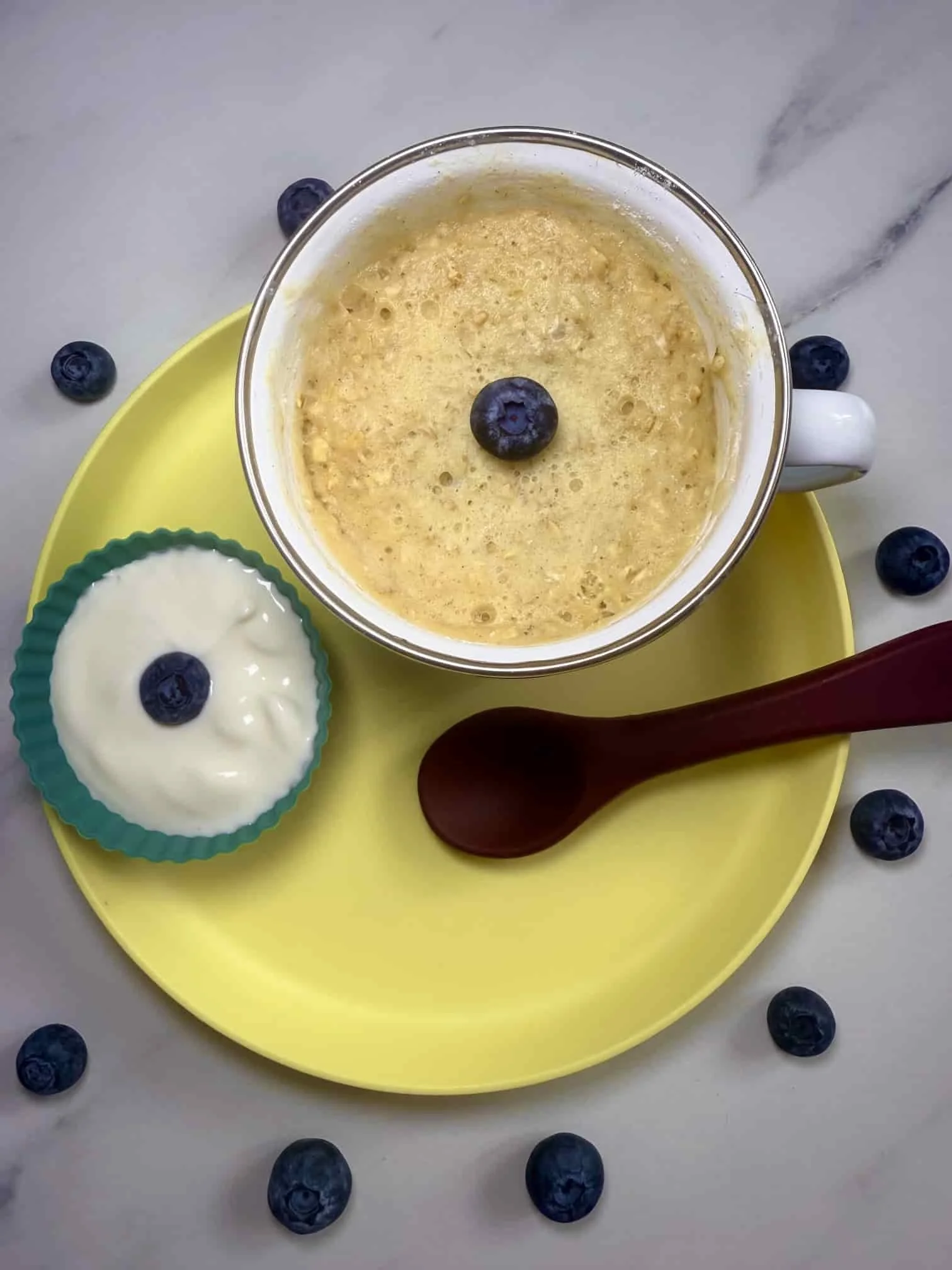
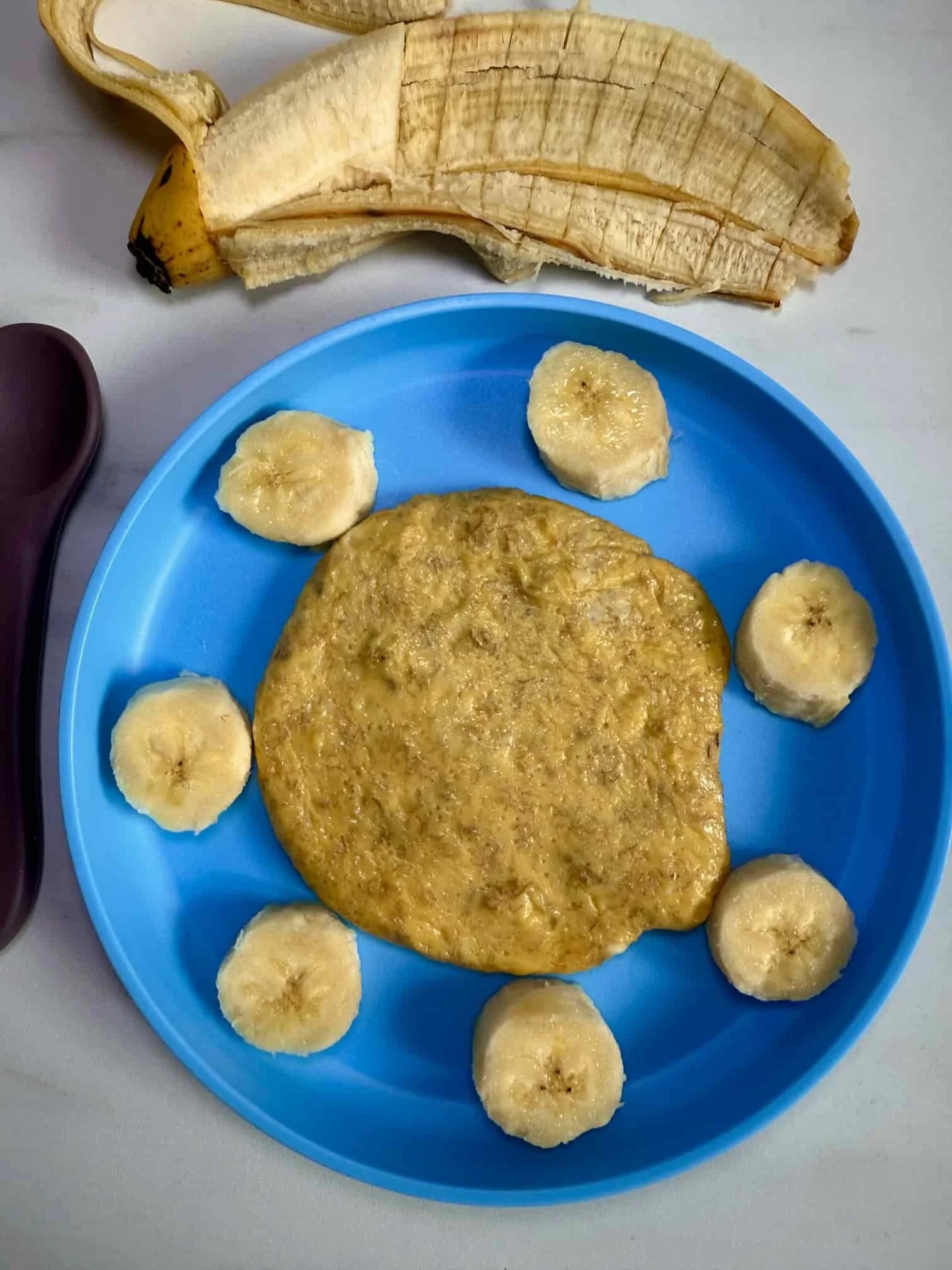













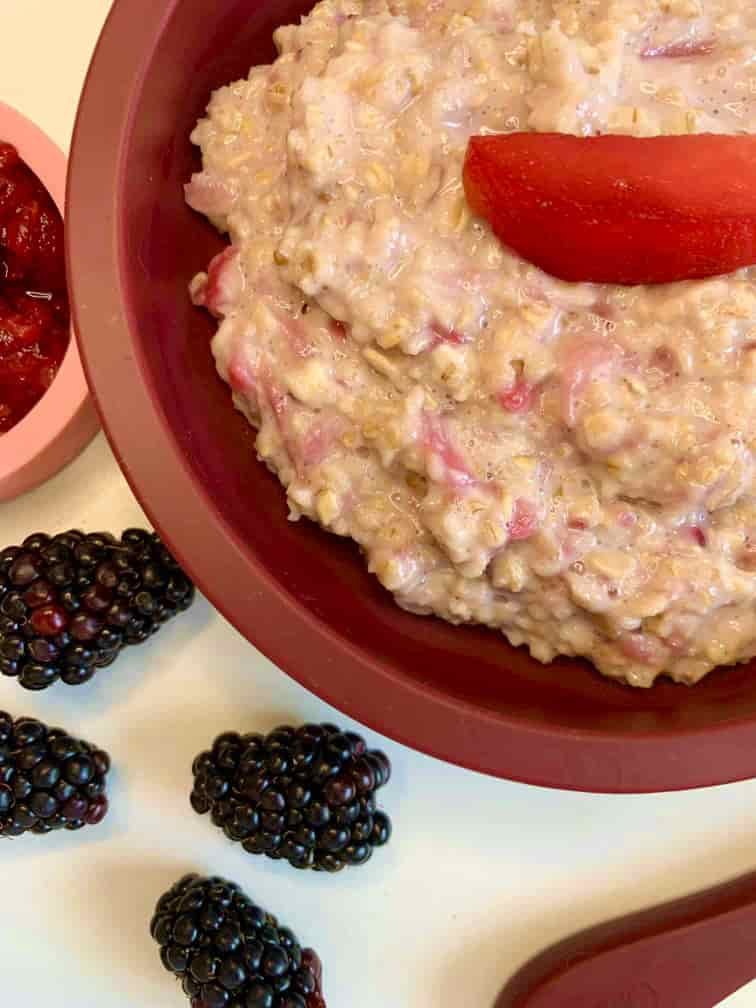









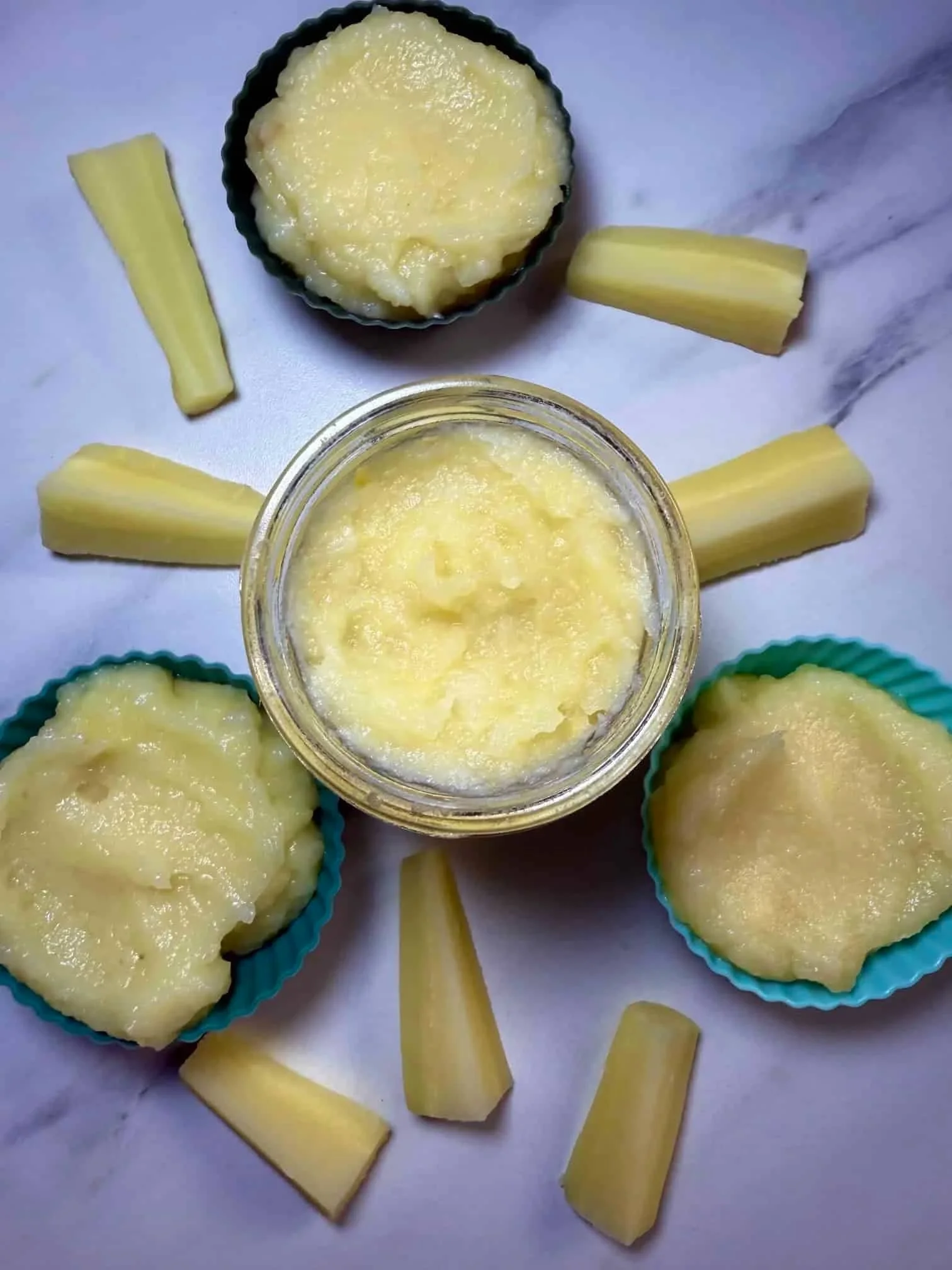











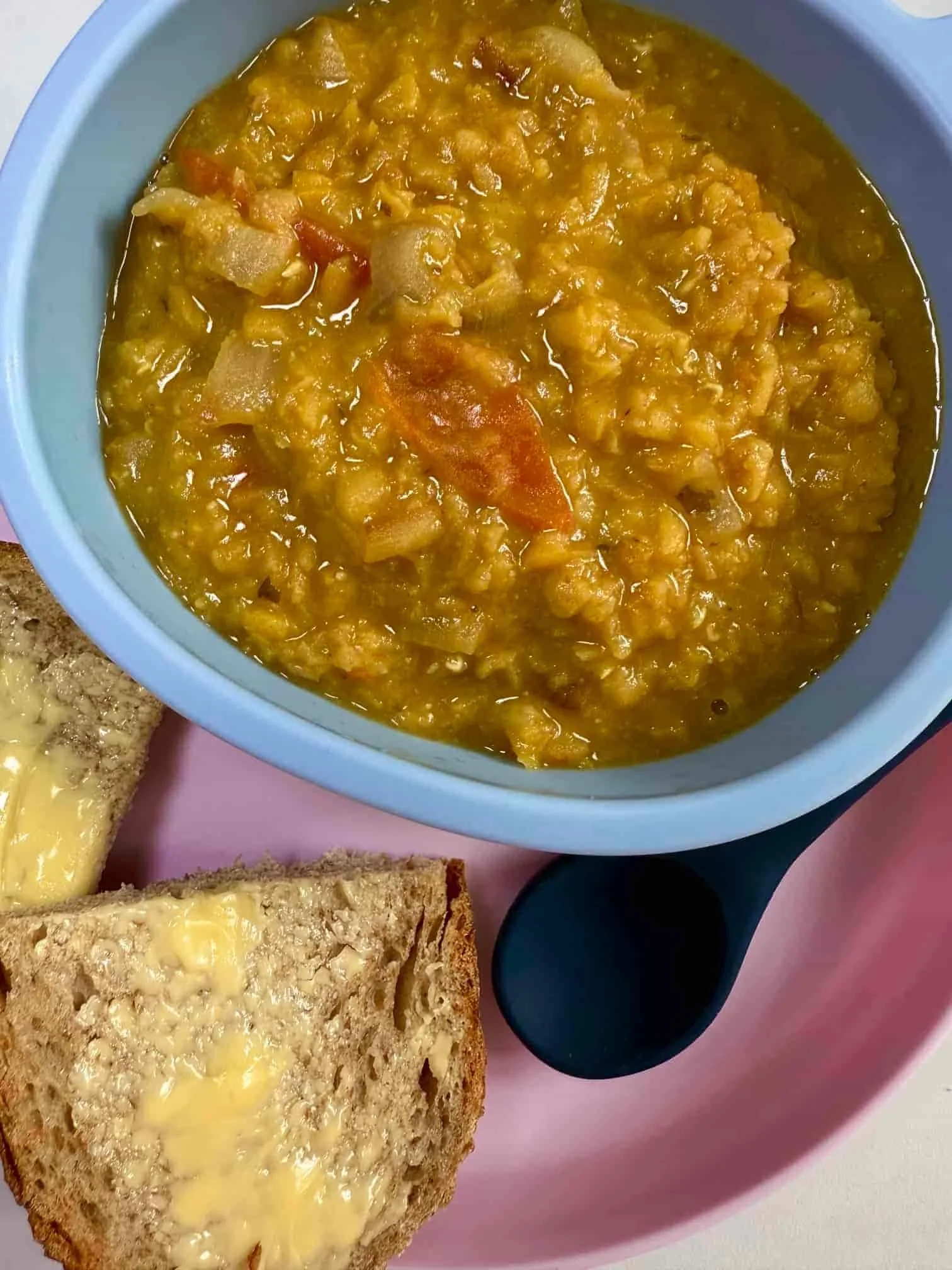














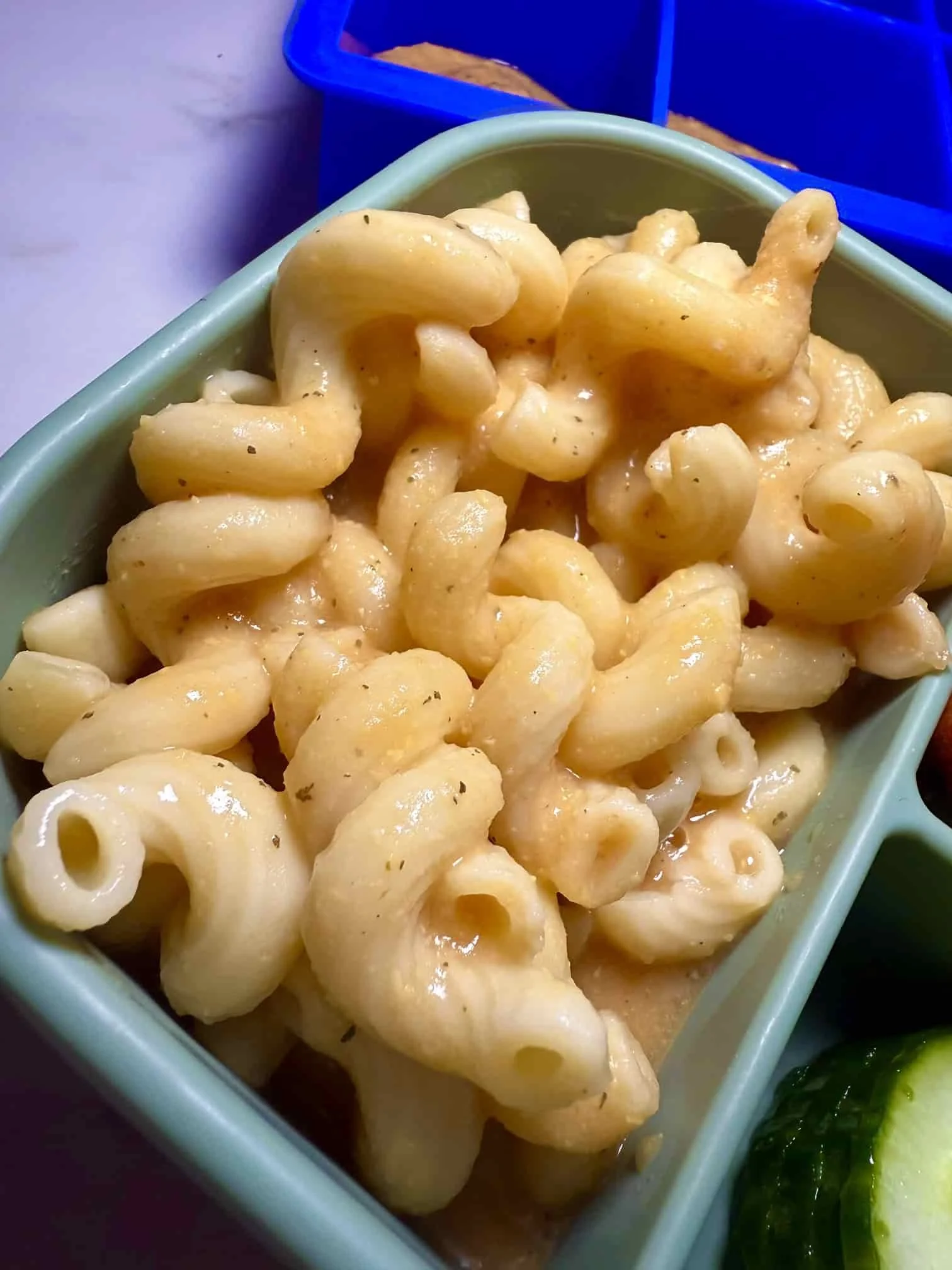





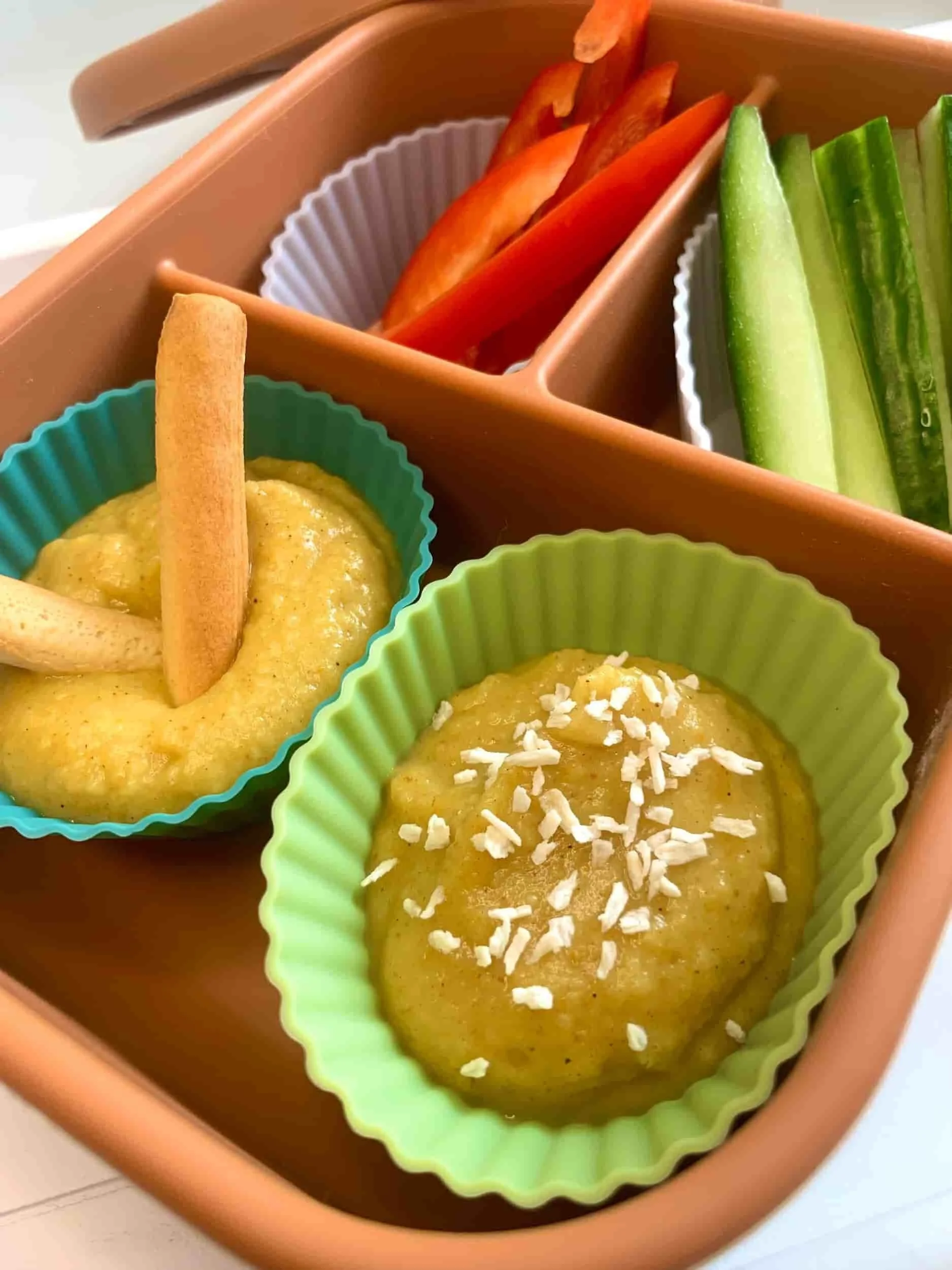


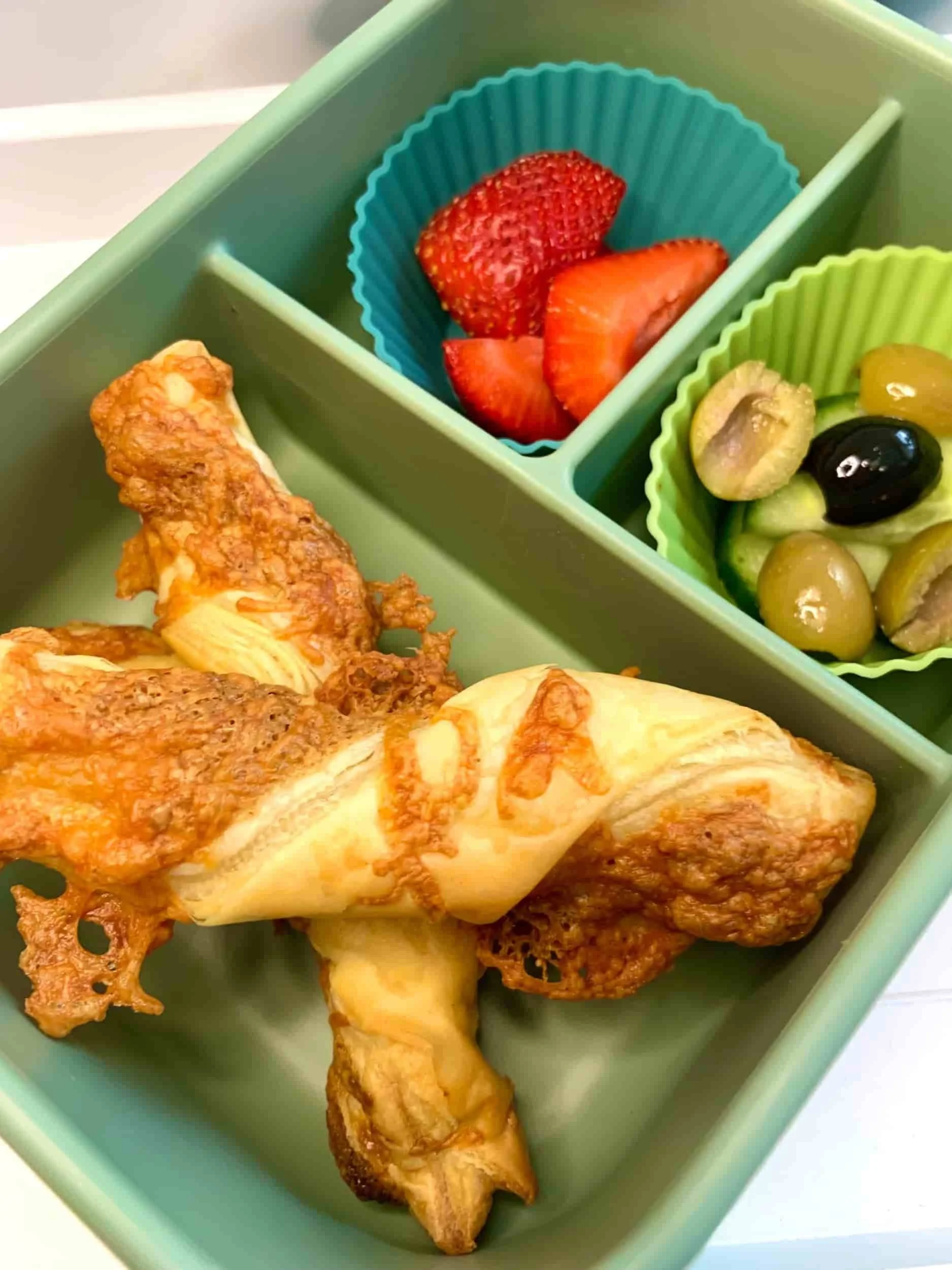




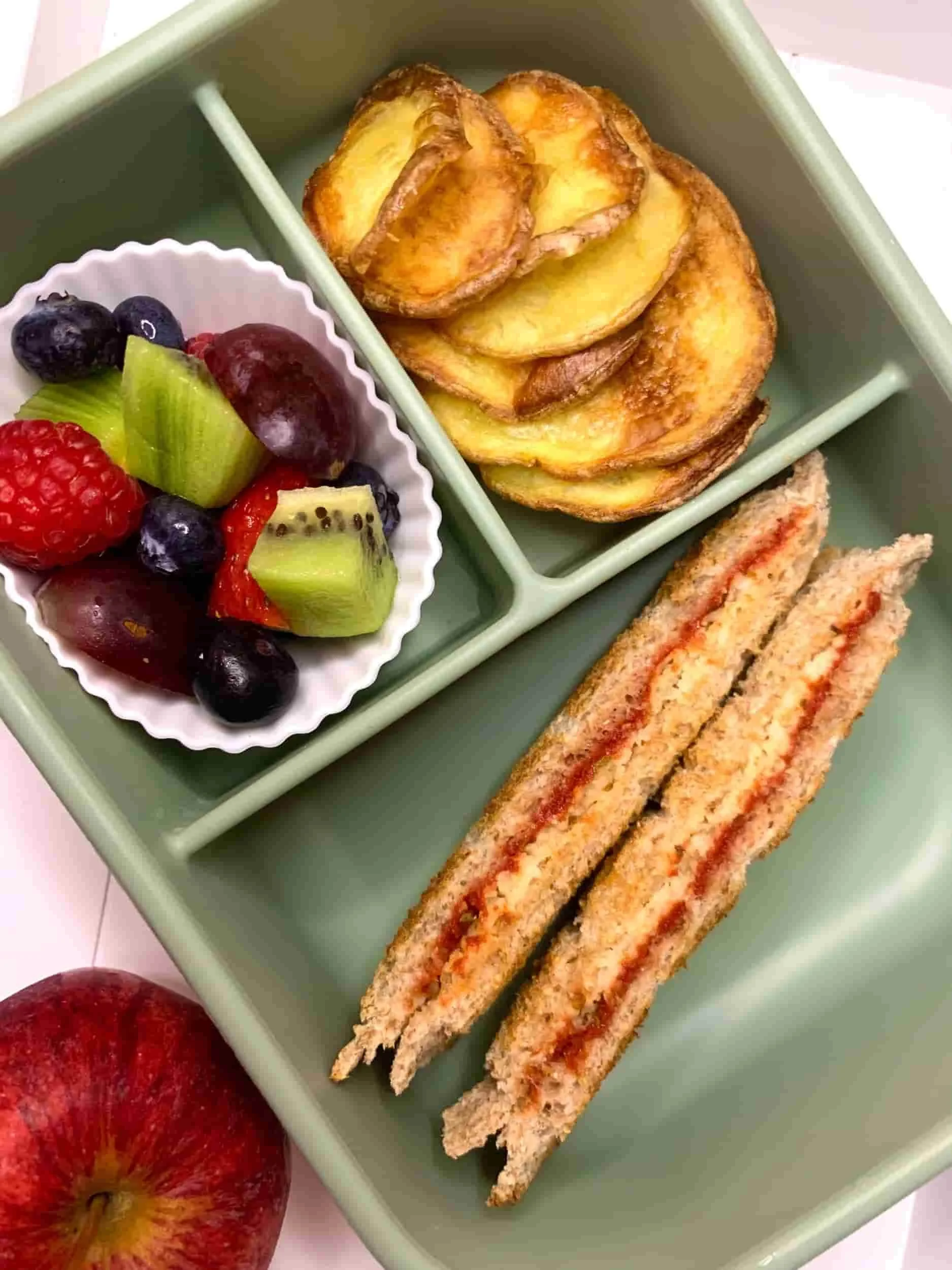
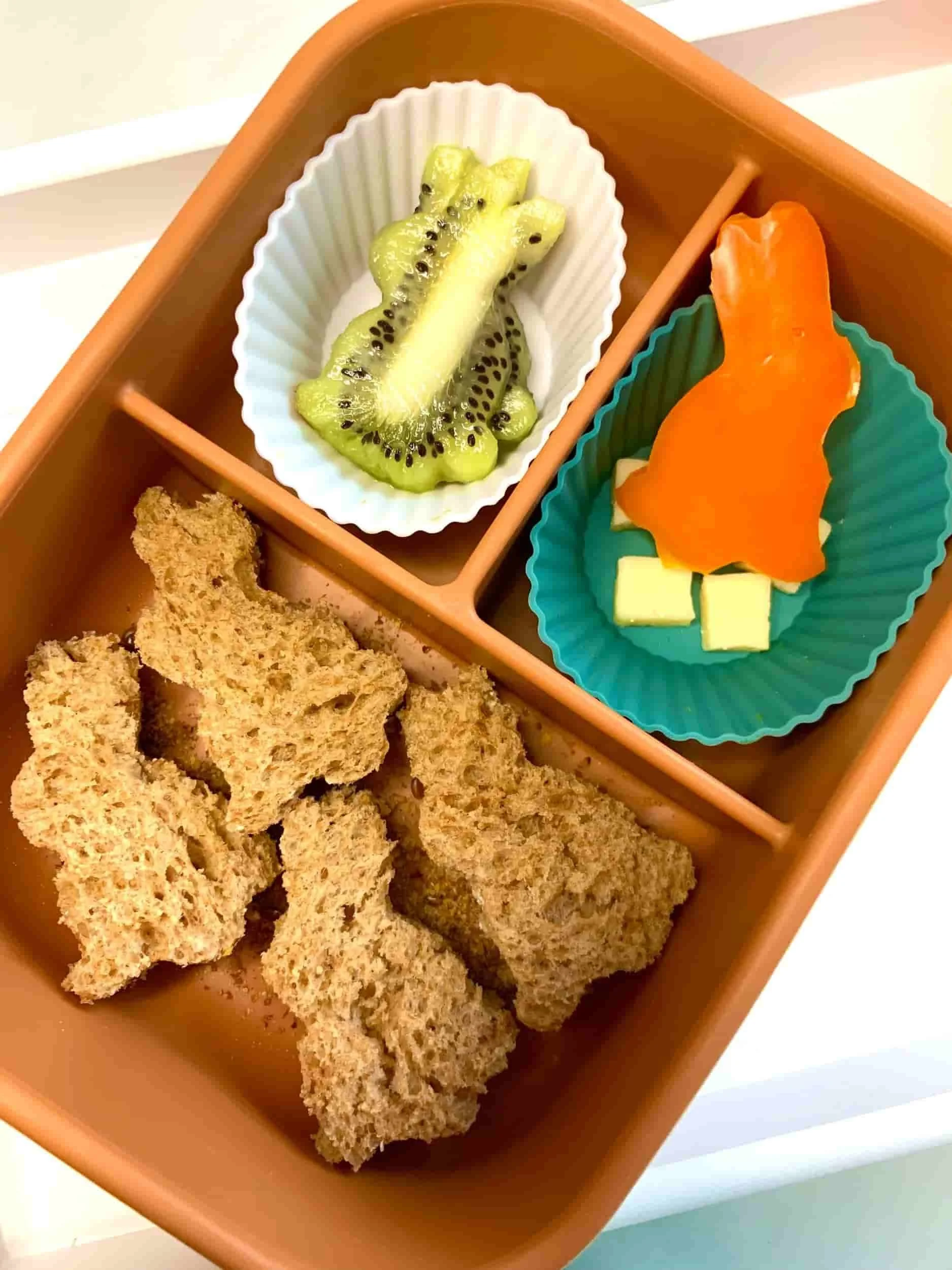










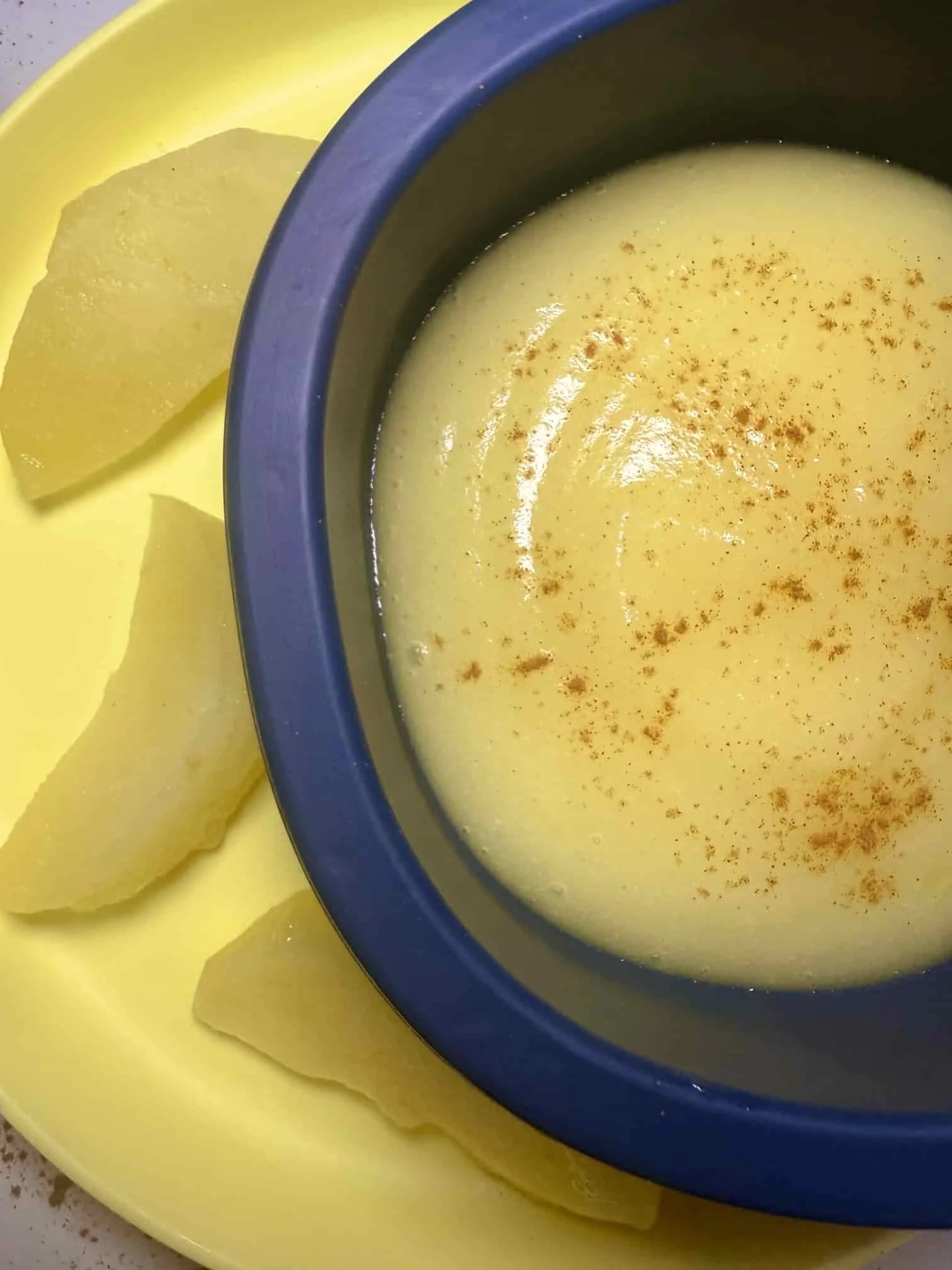
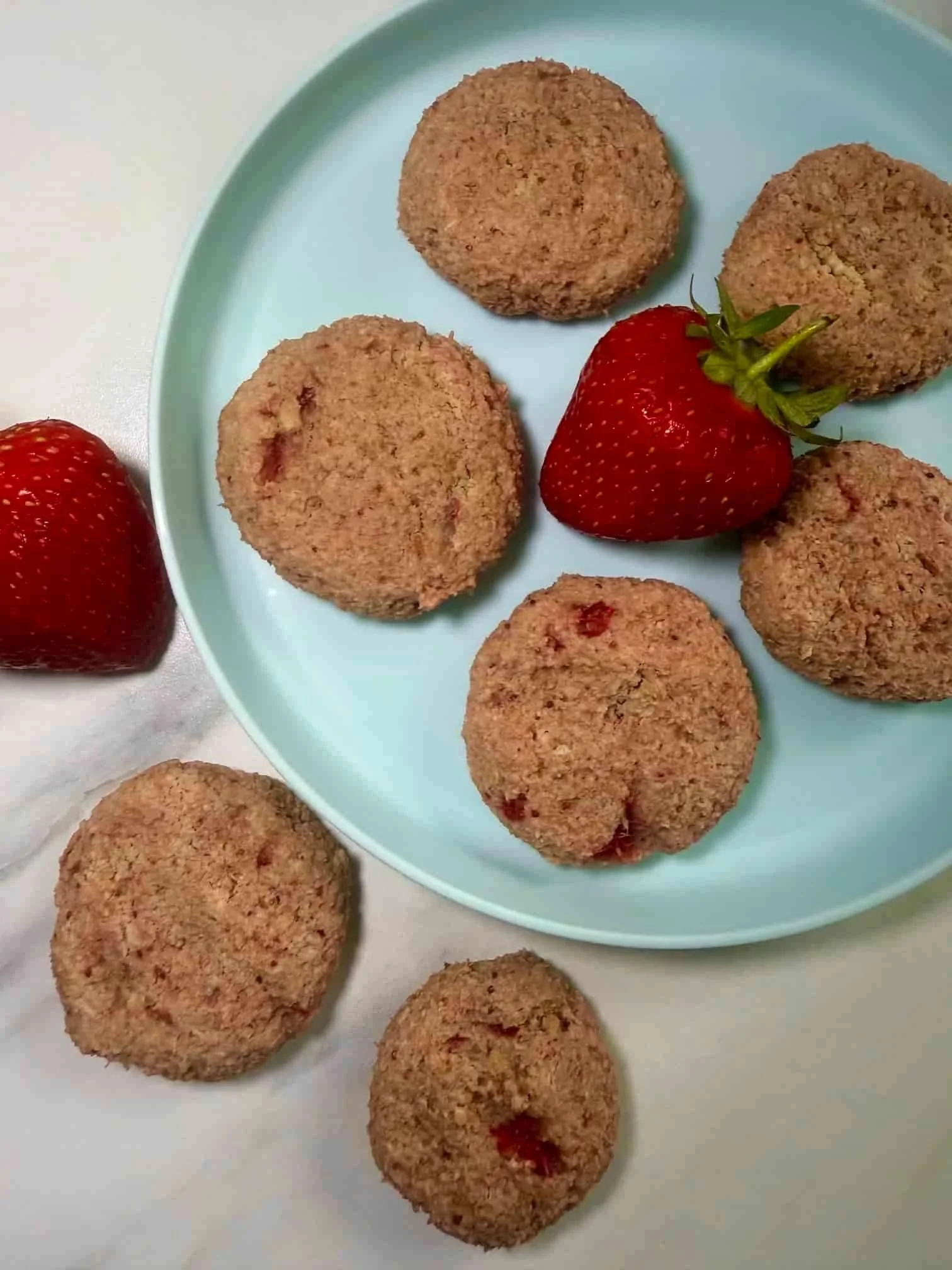
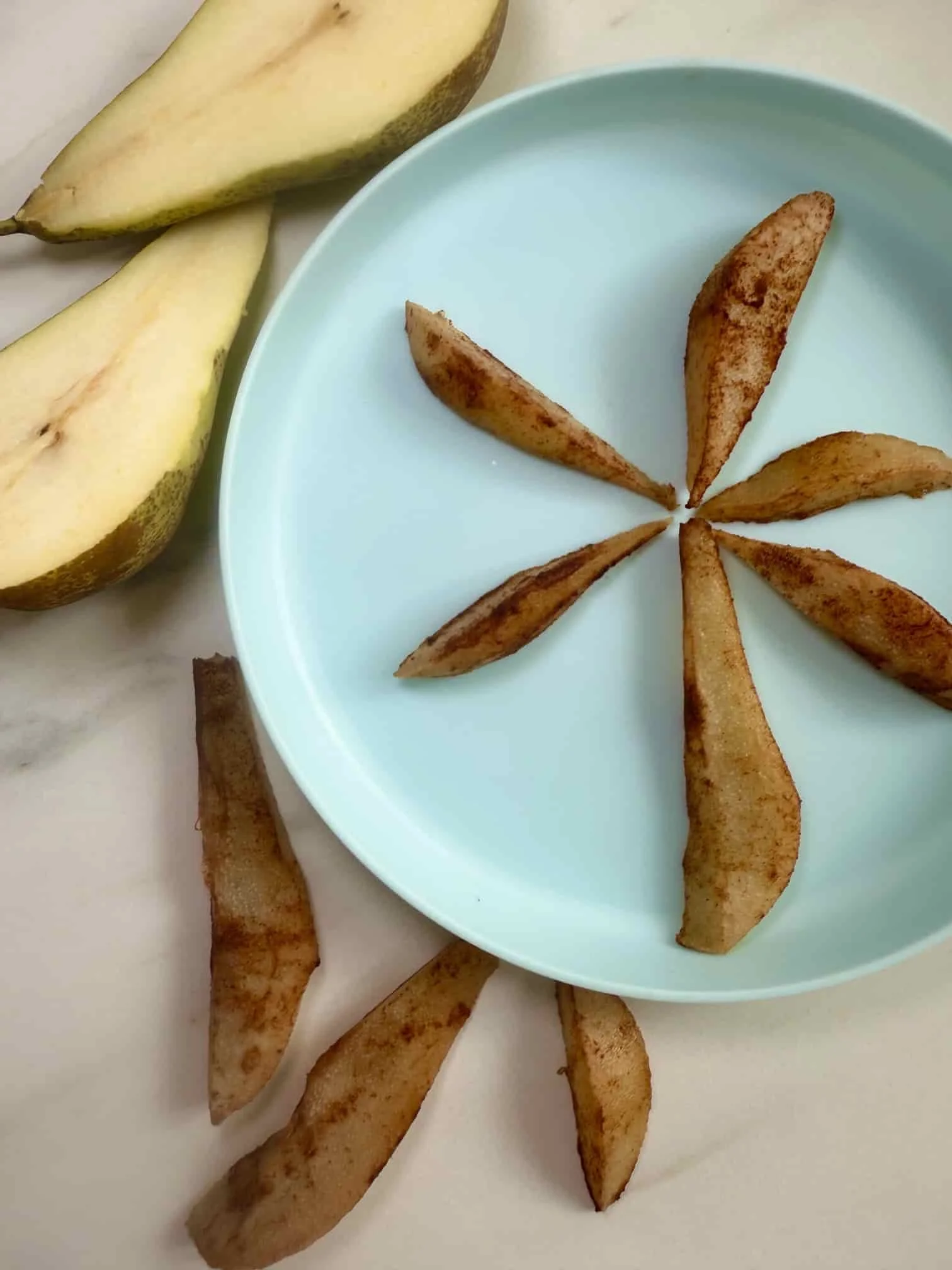
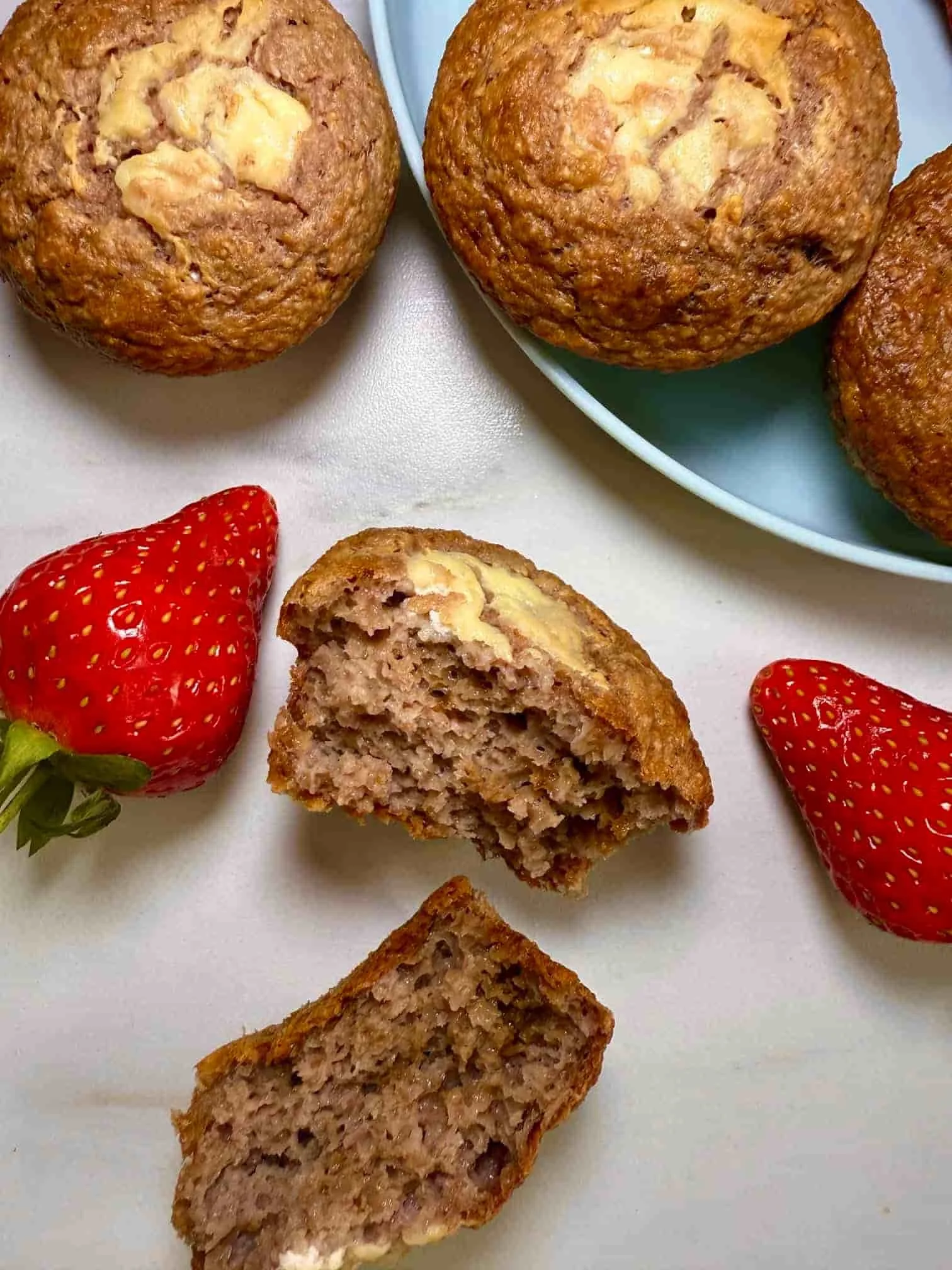


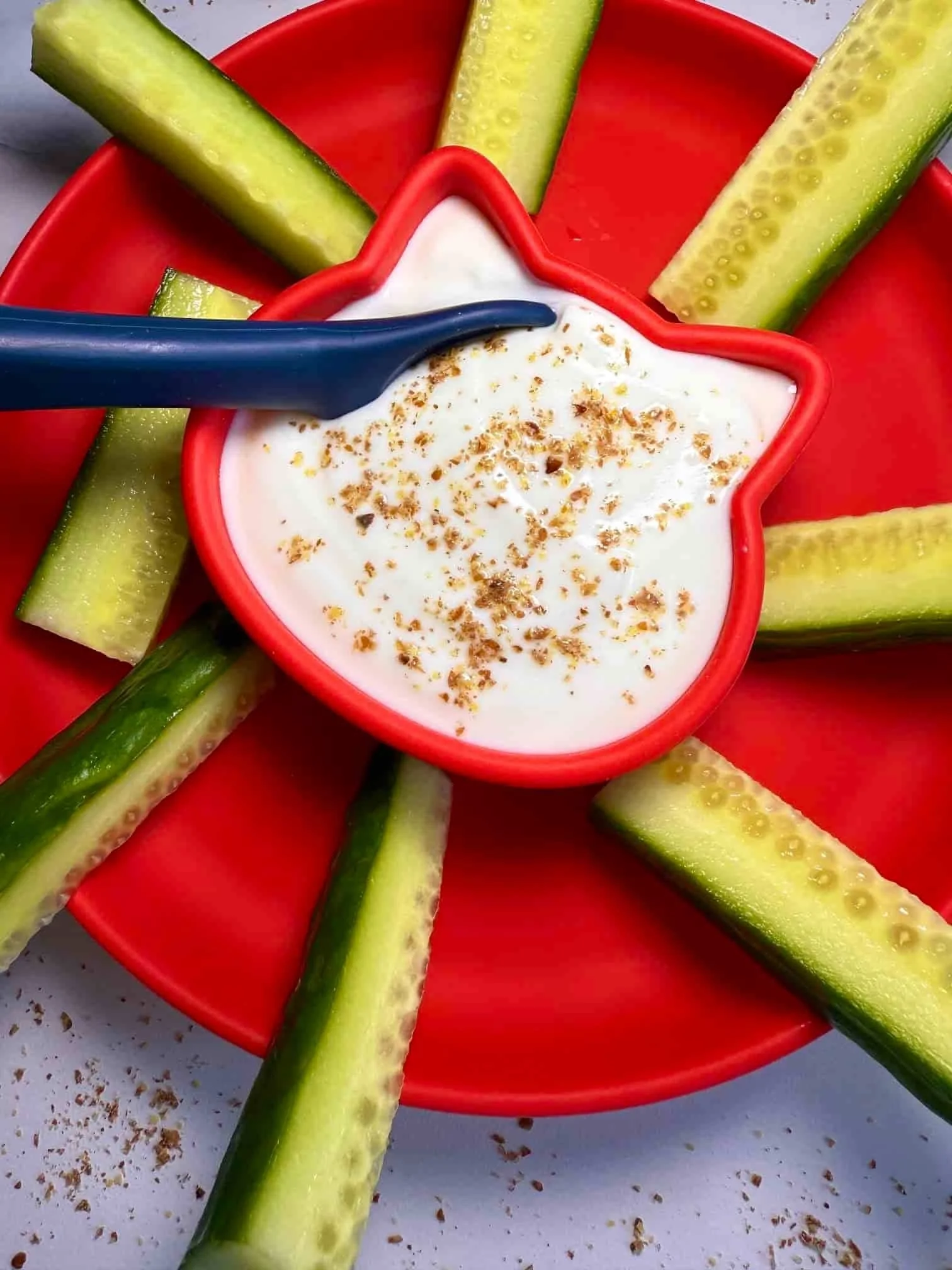























A delicious 2 ingredient prune puree recipe for baby food and baby led weaning. A great way to introduce new flavours to your baby and their taste buds.